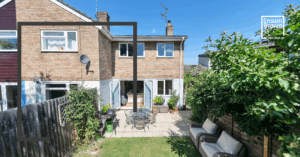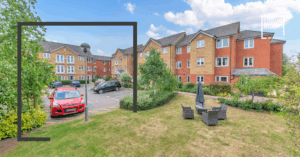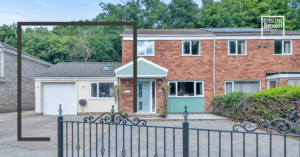Investing in HMOs (Houses in Multiple Occupation) is often seen as a lucrative path in the property investment world. With the potential for high rental yields and strong tenant demand, it’s no wonder many landlords are exploring this route. However, before converting a property or purchasing one already set up as an HMO, there are several important considerations to keep in mind.
What is an HMO?
An HMO is a property rented out to multiple tenants who are not from the same household, usually with private bedrooms and shared access to kitchens and bathrooms. Legally, if a property is let to three or more unrelated individuals, it is likely to be classed as an HMO under UK housing legislation.
The Advantages of HMOs
For landlords focused on maximising rental yield, investing in HMOs offers several benefits:
- Higher rental income potential: Renting out rooms individually can produce a significantly higher total rent compared to letting the whole property to a single tenant or family.
- Strong tenant demand: With the cost of living rising, more tenants are considering house shares, particularly in towns and cities.
- Reduced risk of voids: If one tenant moves out, the rest of the rooms are likely still generating income.
- Greater return on investment: HMO properties tend to outperform standard buy-to-lets in terms of yield.
According to Lendlord’s Q4 2024 data, the average HMO yield in the UK stands at 10.4%, with some areas achieving yields as high as 15.4%. Average annual rental income is just over £28,000, and in certain locations, this can exceed £46,000.
(Yields and rents vary depending on location and property condition. Always do your own due diligence and calculations.)
The Disadvantages of HMOs
Despite the benefits, investing in HMOs comes with added complexities and costs:
- Higher set-up costs: Converting a property to meet HMO standards can be expensive, often involving layout changes, safety measures, and upgraded facilities.
- Challenging mortgage financing: Specialist lenders are often required, and you may need a larger deposit and pay higher interest rates.
- Increased running costs: More tenants mean more wear and tear, more maintenance, and usually inclusive bills. There may also be licensing fees to consider, often between £500–£1,000 per property.
- More time-intensive management: HMOs generally require more hands-on management, from tenant coordination to maintenance.
- Compliance obligations: There are stricter legal requirements compared to standard rentals, including safety measures, space requirements, and waste management.
HMO Licensing and Regulations
If a property is let to five or more people forming more than one household and sharing facilities, it’s considered a large HMO and will require a licence from the local authority. Some smaller HMOs also require a licence, depending on the area.
In Scotland and Wales, all HMO landlords must be licensed, regardless of property size.
Planning permission may also be required under Article 4 Directions, which remove permitted development rights in certain areas, so it’s vital to consult your local council before proceeding.
What to Consider Before Investing in HMOs
1. Demand in the Local Area
HMOs are particularly popular in university towns and cities, but they also cater to young professionals, contractors, and benefit tenants. Do local research and speak to experienced letting agents to assess tenant demand.
2. Suitability of the Property
Make sure your chosen property meets minimum HMO standards, including:
- Adequate bedroom sizes (minimum 6.51 sq.m for a single occupant, 10.22 sq.m for two).
- Sufficient shared amenities (bathroom/WC per 4–5 residents).
- Proper fire safety measures, including alarms and escape routes.
- Natural light and ventilation in all habitable rooms.
3. Planning Permission
As mentioned, some areas require planning permission to convert a house into an HMO. It’s essential to check whether the property is in an Article 4 area where additional planning controls are in place.
Final Thoughts
Investing in HMOs can offer excellent returns, particularly in areas with high demand and limited shared housing. However, it’s not without challenges. Higher upfront costs, greater compliance obligations, and the need for proactive management make this a more involved investment strategy.
Jeni Browne of mortgage brokers MFB recently told LandlordZone, “Higher mortgage costs are squeezing cashflow, meaning landlords are shifting their focus to higher-yielding assets, of which HMOs are a strong option.” She also noted that multiple rents from a single property can help reduce the risk of rental voids — one of the key benefits of this investment model.
That said, she cautions: “You shouldn’t underestimate the challenges of this more complex property investment type.”
If you’re considering investing in HMOs, or converting an existing rental, our expert team is here to help. From sourcing the right property to full HMO property management, we provide advice and support to make your landlord journey easier and more profitable.
Please feel free to get in touch to discuss how we can help, or share this article with anyone you think would find it useful.
Important Links
Book a Lettings Valuation
Visit our Royston Facebook Page
Visit our Newmarket Facebook Page
View our Ware Facebook Page





